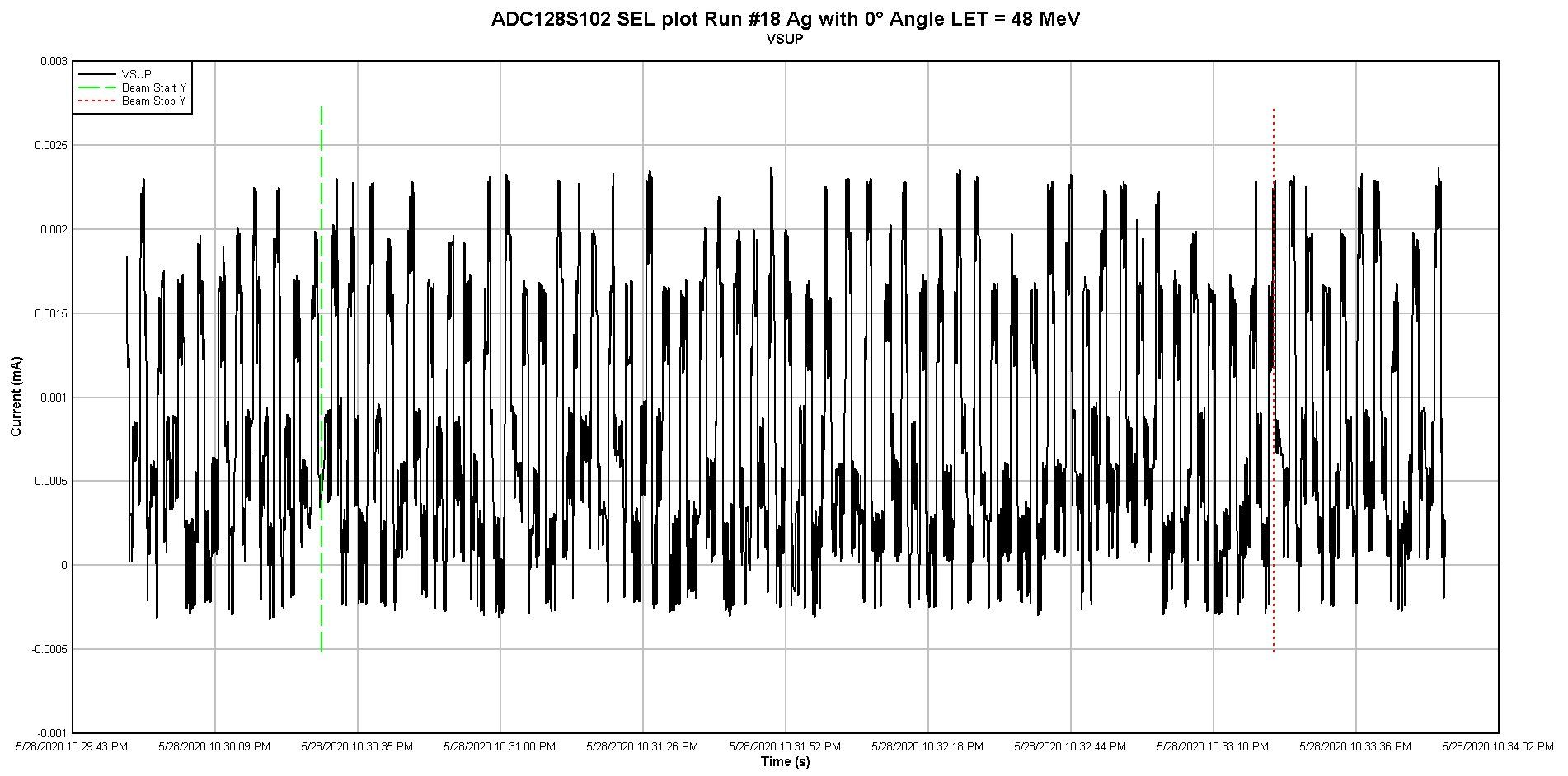SNAK009A April 2022 – February 2024 ADC128S102-SEP
5 Single-Event Latch-Up Results
During SEL characterization, the device was heated using forced hot air, maintaining the device temperature at 125°C. The temperature was monitored by means of a K-type thermocouple attached as close to the device as possible. The species used for SEL testing was a silver (47Ag) ion with an angle-of-incidence of 0° for an LETEFF = 43MeV-cm2 / mg. The kinetic energy in the vacuum for this ion is 1.634GeV (15MeV/amu line). A flux of approximately 105 ions/s-cm2and a fluence of approximately 107 ions / cm were used for two runs. The VA supply voltage is supplied externally onboard with the highest recommended voltage setting of 5.25V for VA and VD. The run duration to achieve this fluence was approximately two minutes. As listed in Table 5-1, no SEL events were observed during all four runs. Figure 5-1 shows a plot of the current versus time.
| Run Number | Distance (mm) |
Temperature (°C) |
Ion | Angle | Flux (ions × cm2/mg) |
Fluence (ions) |
LETEFF (MeV × cm2 / mg) |
|---|---|---|---|---|---|---|---|
| 16 | 40 | 125 | Ag | 0° | 1.00E+05 | 1.00E+07 | 43 |
No SEL events were observed, indicating that the ADC128S102-SEP is SEL-immune at LETEFF = 43 MeV-cm2/mg and T = 125°C. Using the MFTF method described in Section 7 and combining (or summing) the fluences of the two runs at 125°C (1 × 107), the upper-bound cross section (using a 95% confidence level) is calculated in Equation 1:
where:
- LETEFF = 43 MeV-cm2 / mg
- T = 125°C
 Figure 5-1 Current vs Time (I vs t) Data
for Vs Current During SEL Run 18
Figure 5-1 Current vs Time (I vs t) Data
for Vs Current During SEL Run 18